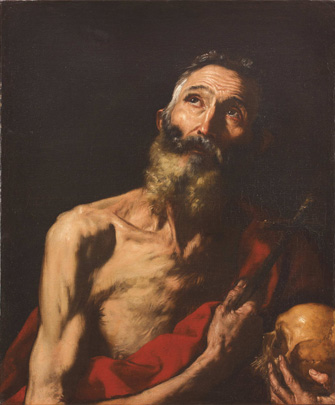 |
|
Julio Romero de Torres: “Portrait of a Woman” |
The Musée Jacquemart-André once again offers a rather misleading title for its new exhibition “From El Greco to Dalí: The Great Spanish Masters” (its last show, “Brueghel, Memling …
 |
|
Julio Romero de Torres: “Portrait of a Woman” |
The Musée Jacquemart-André once again offers a rather misleading title for its new exhibition “From El Greco to Dalí: The Great Spanish Masters” (its last show, “Brueghel, Memling, Van Eyck,” contained only one work by each of the star artists with top billing). The only El Greco in this show is so tiny that you might easily miss it, but to make up for it, the exhibition offers some other masterpieces and lots of Dalís – that part of the title rings true. The most notably absent name from the list of Spanish masters gathered here is Velázquez, but it is presumably impossible for a private collector to obtain a work by him today. One Goya is included: a handsome oil portrait of Doña Maria Teresa de Vallabriga y Rozas (1783), wearing a fur collar and a very serious expression.
Like most such shows featuring private collections – this one was brought together by Mexican businessman Juan Antonio Pérez Simón – it is a sort of grab bag of greater and lesser works. The only thing they have in common is the fact that they were painted by Spanish artists (although El Greco was, of course, born in Crete). There are a number of minor Picassos – including a wonderful quick drawing of a mad dance on the beach by three naked women, “Danse au Bord de la Mer” (1933) and a simple, expressive drawing in watercolor, “Le Déjeuner du Pauvre,” depicting two boys and a dog watching avidly as a grizzled old man eats a meal – and all those Dalís, including an oil I actually liked (not being a fan): “Design for a Ballet Set” (possibly Romeo and Juliet, 1942), in which the spectators – all bearded male Spanish dignitaries in their ruffled collars – are squished together in the audience under an enormous looming crucifix.
The show is divided by theme – royal and popular festivities, religion, children, the female body, eroticism and human misery (the latter two restricted to Picasso), portraits, etc. – rather than chronology, which means that you get Dalí in the same room with, for example,
 |
|
Jusepe de Ribera’s “Saint Jerome” (1648). © Adagp, Paris 2009. Collection Pérez Simón, Mexico. © Fundación JAPS. © Studio Sébert photographes |
16th-century painter Alonso Sánchez Coello or the brilliant Jusepe de Ribera, who provides what in my book is the best work in this show, “Saint Jerome” (1648), with his red-rimmed eyes lifted to heaven, dating from 1648. Who could paint old age better than Ribera?
The other standouts in this show are the portraits: a lovely portrayal of his daughter, Feliciana Bayeu, by Francesco Bayeu y Subias (1734-1795), which captures her timid, almost fearful expression; a likeness of the kneeling María Amparo Cienfuegos, looking up so flirtatiously from her prayer book that it is hard to believe in her piety, by Federico de Madrazo y Kuntz (1815-1894); “Portrait of Señora Corcuera,” with her red-rimmed eyes and full-length purple dress, by Ignacio Zuloaga y Zabaleta (1870-1943); and “Portrait of a Woman” (pictured above), depicting a beauty who looks so very modern, composed, self-assured and seductive, by Julio Romero de Torres (1874-1930).
The show ends with a few works by the “creators of the modern world,” including a 1965 piece by Antoni Tàpies, which is not one of his best but has a wonderfully textured background, two pieces by Joán Miró, a Juan Gris, and a few more Dalís, including a sculpture of the famous dripping clock.
It was a pleasure to see again (after a recent show at the Petit Palais that paired his work with that of John Singer Sargent) a few works by that master of light and water effects, Joaquin Sorolla y Bastida (1863-1923), most notably “Cattle in the Sea” (1903), a study for “Afternoon Sunlight,” in which you can almost feel the solid weight of the beasts resisting the pull of the frothy waves.
Musée Jacquemart-André: 158, boulevard Haussmann, 75008 Paris. Métro: Saint-Augustin, Miromesnil or Saint-Philippe du Roule. RER: Charles de Gaulle-Étoile. Tel.: 01 45 62 11 59. Open daily, 10 a.m.-6 p.m. Admission: €10. Through August 1. www.musee-jacquemart-andre.com. An iPhone tour of the show can be downloaded on the show’s mini-site.
Buy related books and films from the Paris Update store.
More reviews of Paris art shows.
Reader Reaction: Click here to respond to this article (your response may be published on this page and is subject to editing).
© 2010 Paris Update
Favorite